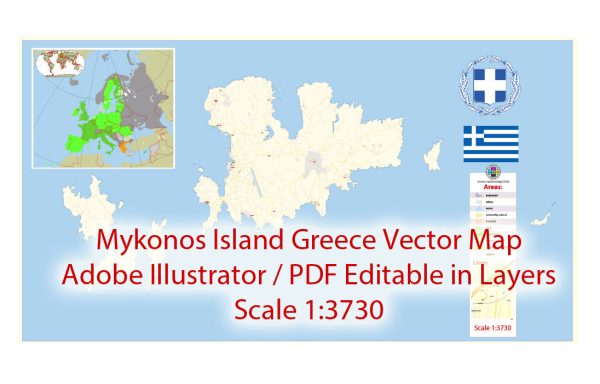Mykonos, a popular Greek island in the Aegean Sea, is not primarily known for its agriculture, as its economy largely relies on tourism. However, there is some limited agricultural activity on the island due to its climate and terrain. Here is a brief description of agriculture in Mykonos:
- Limited Agriculture: Mykonos has a rocky and arid landscape with poor soil quality, which makes large-scale agriculture difficult. As a result, agriculture on the island is limited and often revolves around small-scale, subsistence farming.
- Traditional Crops: The local farmers on Mykonos typically cultivate traditional Mediterranean crops such as olives, figs, grapes, and some vegetables. These crops are well-suited to the island’s climate and can withstand the arid conditions.
- Olive Trees: Olive cultivation is one of the more significant agricultural activities on the island. Mykonos produces its own olive oil, which is used both locally and exported to other parts of Greece.
- Viticulture: Mykonos has a small but growing wine industry. Some vineyards produce local wines, taking advantage of the island’s unique terroir and climate. These wines are usually enjoyed by locals and tourists.
- Seasonal Farming: Due to the island’s climate, farming on Mykonos is highly seasonal, with most agricultural activities occurring in the cooler and wetter months of the year.
- Challenges: The challenges facing agriculture in Mykonos include limited water resources, soil infertility, and the island’s vulnerability to extreme weather conditions. Farmers often employ traditional and sustainable farming practices to cope with these challenges.
- Agricultural Tourism: In recent years, there has been a growing interest in agritourism, where tourists can visit local farms, participate in the olive and grape harvesting process, and learn about traditional farming methods. This has become a way to diversify the island’s tourism offerings.
It’s essential to understand that while agriculture is a part of Mykonos’ cultural heritage, it plays a relatively minor role in the island’s overall economy when compared to its booming tourism industry. Mykonos is renowned for its stunning beaches, vibrant nightlife, and picturesque villages, making it a top destination for travelers seeking sun and fun rather than an agricultural experience.


 Author: Kirill Shrayber, Ph.D.
Author: Kirill Shrayber, Ph.D.